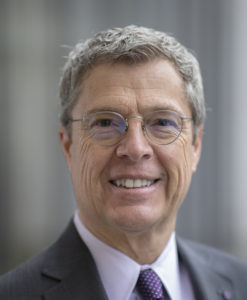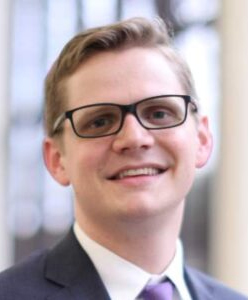

Brett G. Scharffs is Director of the International Center for Law and Religion Studies and Rex E. Lee Chair and Professor of Law for the BYU Law School. Brock Mason is a Student Fellow for the International Center for Law and Religion Studies and PhD Candidate at Fordham University.
Gathered in Paris, France more than 70 years ago, the newly minted United Nations met to consider and vote on an important resolution. Drafted in the aftermath of World War II and its horrific humanitarian tragedies, Resolution 217A expressed deep aspirations to recognize, protect, and promote human rights throughout the world. And on December 10, 1948, with no country voting against it, Resolution 217A—the Universal Declaration of Human Rights (UDHR)—was adopted by the General Assembly.
Recognizing that “disregard and contempt for human rights have resulted in barbarous acts which have outraged the conscience of mankind,” the UDHR affirmed the “inherent dignity” and the “equal and inalienable rights of all members of the human family.” It further proclaimed that recognizing the dignity and rights of all people is “the foundation of freedom, justice, and peace in the world.” This remarkable document has since served as the foundation of international protections for human rights, providing the backbone for multiple international and regional human rights treaties and establishing the centrality of human rights in international politics.
Among the fundamental rights recognized by the UDHR, Article 18 affirms that “everyone has the right to freedom of thought, conscience, and religion,” including the right to manifest one’s religion or belief “either alone or in community with others.” Of course, this basic right—the freedom of religion or belief—is not alone or absolute. The UDHR recognizes that, at times, the right to freedom of religion or belief may conflict with other rights or require limitation.
The COVID-19 epidemic has brought some of these tensions to light, as public health concerns have prompted temporary restrictions on worship services throughout the world. For some, the restrictions are necessary and justified in light of a global pandemic, but for others, the restrictions disregard the importance of religious worship as an “essential” component of living one’s faith.
While commemorating the 70th anniversary of the UDHR, the new book Freedom of Religion or Belief: Creating the Constitutional Space for Fundamental Freedoms attempts to explore these points of contact and possible conflict between freedom of religion or belief and other fundamental rights. Edited by Paul T. Babie, Neville G. Rochow QC, and Brett G. Scharffs, the book explores freedom of religion or belief as a basic human right and how it interacts with other rights claims.
The book has as its central organizing idea a metaphor—the idea of “constitutional space.” As described in the book’s introduction, constitutional space refers to the legal framework that allows for people of all backgrounds and beliefs to live in accord with their own conscience, while also living together. The idea of constitutional space is to recognize a sphere beyond governmental power, where people can believe and act in the ways that seem right to them; it allows individuals and communities to seek truth and live out their best understanding of it. When a legal system creates and protects constitutional space, it will recognize the rights of all people and will provide “elbow room” for citizens to exercise those rights, enabling both individuals and communities to thrive.
To achieve constitutional space, there must be “a set of political and legal norms that create space for people and communities to work out their deeper moral and religious ways of living their lives.”[1] The laws should be organized around neutral principles that do not pick winners or losers or label some beliefs “orthodox” and others “heresy.” Rather, the law should provide space for individuals to explore for themselves what constitutes the best life.
Put simply, people are different. They believe differently, worship differently, and live differently; they have different moral codes, different conceptions of a good life, and they want to live in such a way that reflects and honors their beliefs. The law should provide constitutional space for all people to do precisely that—live with their deepest and most cherished beliefs, whatever they may be.
Of course, to provide this constitutional space requires restraint. The notion of constitutional space requires the government to stay out of religious issues generally; it should not dive in headlong and decide which life citizens should pursue or which religious or secular worldviews are worth promoting. Rather, the state should provide an environment in which all people can seek the truth and live it. Further, constitutional space requires individuals to respect the rights of others to believe freely and shape their lives around their conception of the truth.
Constitutional space will primarily be a matter of constitutional culture—a way of thinking about our legal and political institutions, including the Constitution and Bill of Rights, and a mindset of each branch of government. As a matter of law, it suggests an approach to our basic rights and freedoms that is expansive and pluralistic. Especially with respect to the basic rights identified in the First Amendment, a judiciary committed to creating constitutional space will implement a vision of robust protections for religious freedom, including the non-establishment of religion, freedom of speech, freedom of the press, freedom to peaceably assemble, and the right to petition the government for the redress of grievances.
The law has the essential role of protecting the rights of all to live and believe in accordance with their conscience and convictions. The job of the state is not to take sides on questions of religion or conscience, but to provide the conditions for individuals and communities to take up those questions on their own, free from oppression or intrusion from the state or others. Only in this way can the fundamental rights and freedoms of all be protected.
This is not easy. Clashes between rights and the people asserting them will happen. Invoking the idea of constitutional space will not solve every problem, as the editors of Freedom of Religion or Belief: Creating the Constitutional Space for Fundamental Freedoms recognize. Inevitably, there will be conflicts between various rights that the state must mediate and questions that will be difficult to answer. But the idea of constitutional space provides a framework, mindset, or disposition for addressing these conflicts and helps us ask the right question. When rights do conflict, the question should not simply be which side wins but rather how can we allow all people the space to manifest their beliefs and faith. Perhaps this is not always possible, but it should be the aspiration of all those who inherit the tradition of the Universal Declaration of Human Rights—to “act towards one another in a spirit of brotherhood.”
[1] Paul T. Babie, Neville G. Rochow QC and Brett G. Scharffs, ‘Creating and Conserving Constitutional Space’, In Paul T. Babie, Neville G. Rochow QC and Brett G. Scharffs (eds.), Freedom of Religion or Belief: Creating the Constitutional Space for Fundamental Freedoms (Edward Elgar, 2020), p. 10.
